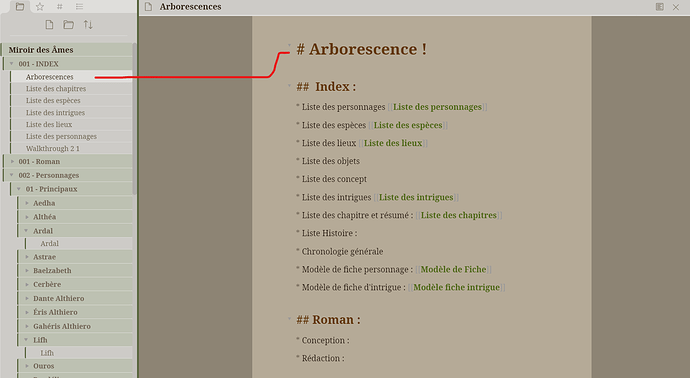For my workflow, the least amount of friction comes by combining espanso, the Daily Note template, tags, and the starred section. I don’t use folders since the number of notes grows more and more with linked notes for terms, books, people, ideas, etc. At some point it becomes overload and scrolling through the list of notes is all but useless to me. So keep in mind the following is tag-focused. By doing so, I don’t need to fiddle with sorting new notes into specific folders, and when making a new note I know it doesn’t need further sorting (because of the tags).
Espanso
For a note about a specific book, I can create a new note and type /book and it will replace that with formatted text I set up in espanso, including the tag #book. I like using this to keep each of those pages formatted correctly and consistently. You can set them up for anything, and for your workflow I could see setting up a /software, /audio, /video, etc. shortcut so that you can have the note preformatted in the way you want and automatically add the tag to the page.
Daily Note
This is pure preference, because the same can be achieved with espanso, but I set up a template for my long-form notes as the Daily Note template. All I have to do is click the Daily Note button and a new note with this formatting is created.
Tags
This is how I sort and categorize my notes. The benefit I find of using tags instead of folders is in adding multiple tags. In essence, it’s like adding a single note to multiple folders. Since you can search for multiple tags at once, any note that contains those two/three/four tags shows up and narrows the field. However, if you’re used to folder sorting this could take some getting used to. Again, personal preference.
Starred Section
For the starred section, I add evergreen notes, notes that I’m currently working on, or notes that I need to work on. I’m sure this is the widely used method for the starred section as well.
Overall, I could see this method working for your workflow if it sounds possible for you. Whether or not you like the navigation method is totally up to you, but for me it offers the least amount of friction in working with a great number of notes. You just have to forget about the folder method when you start using this one. It took a while for me to get used to but I really like it now.

